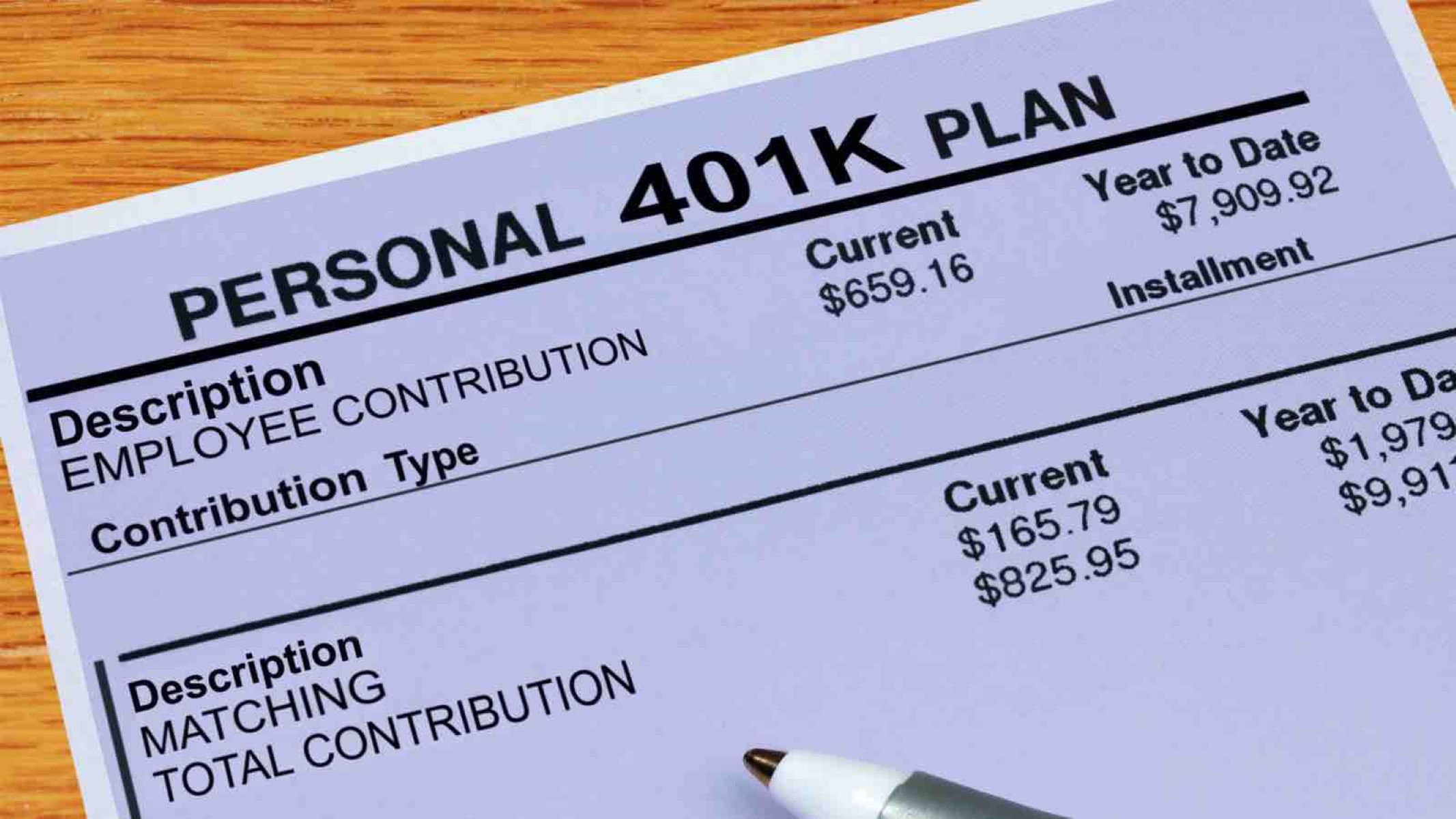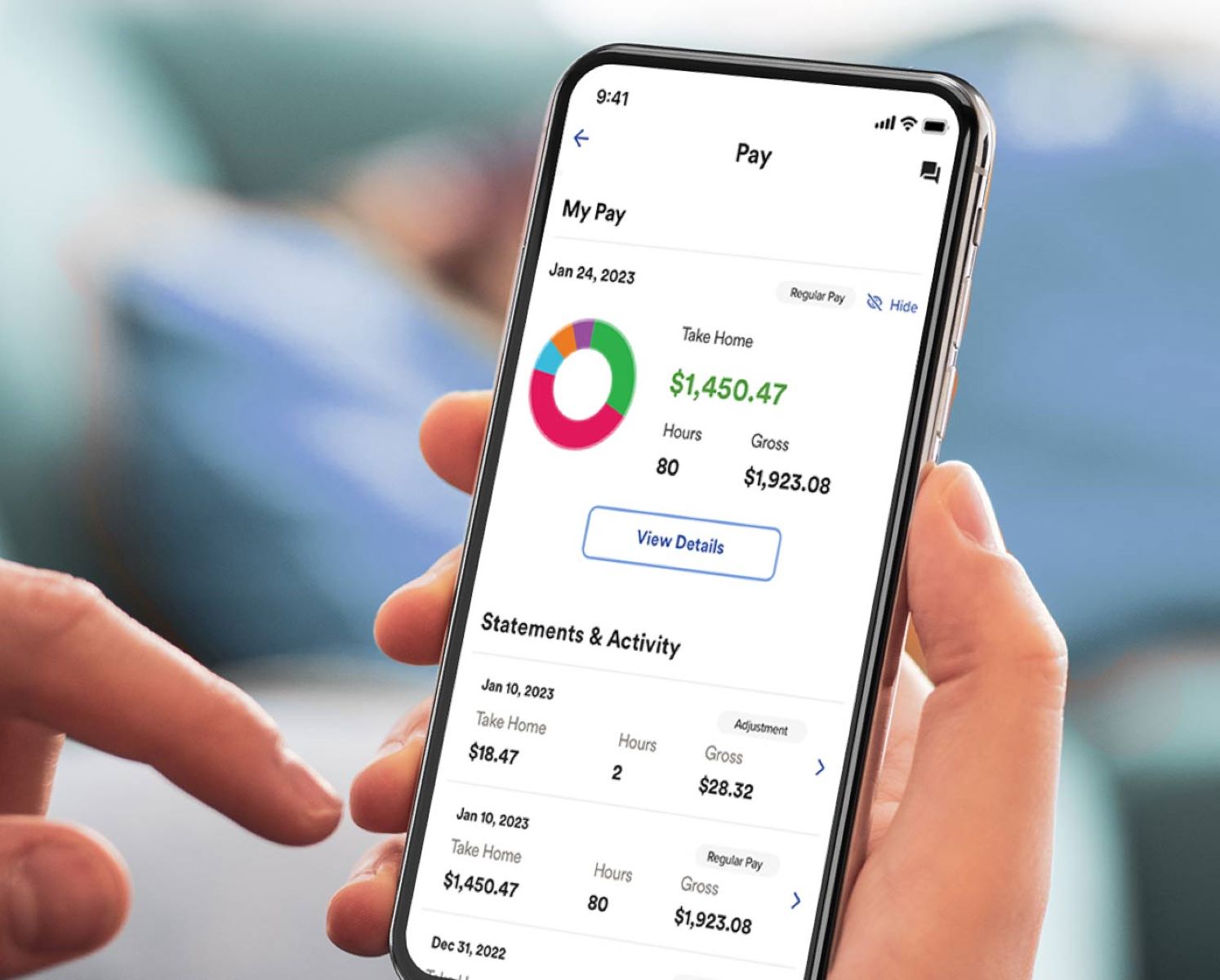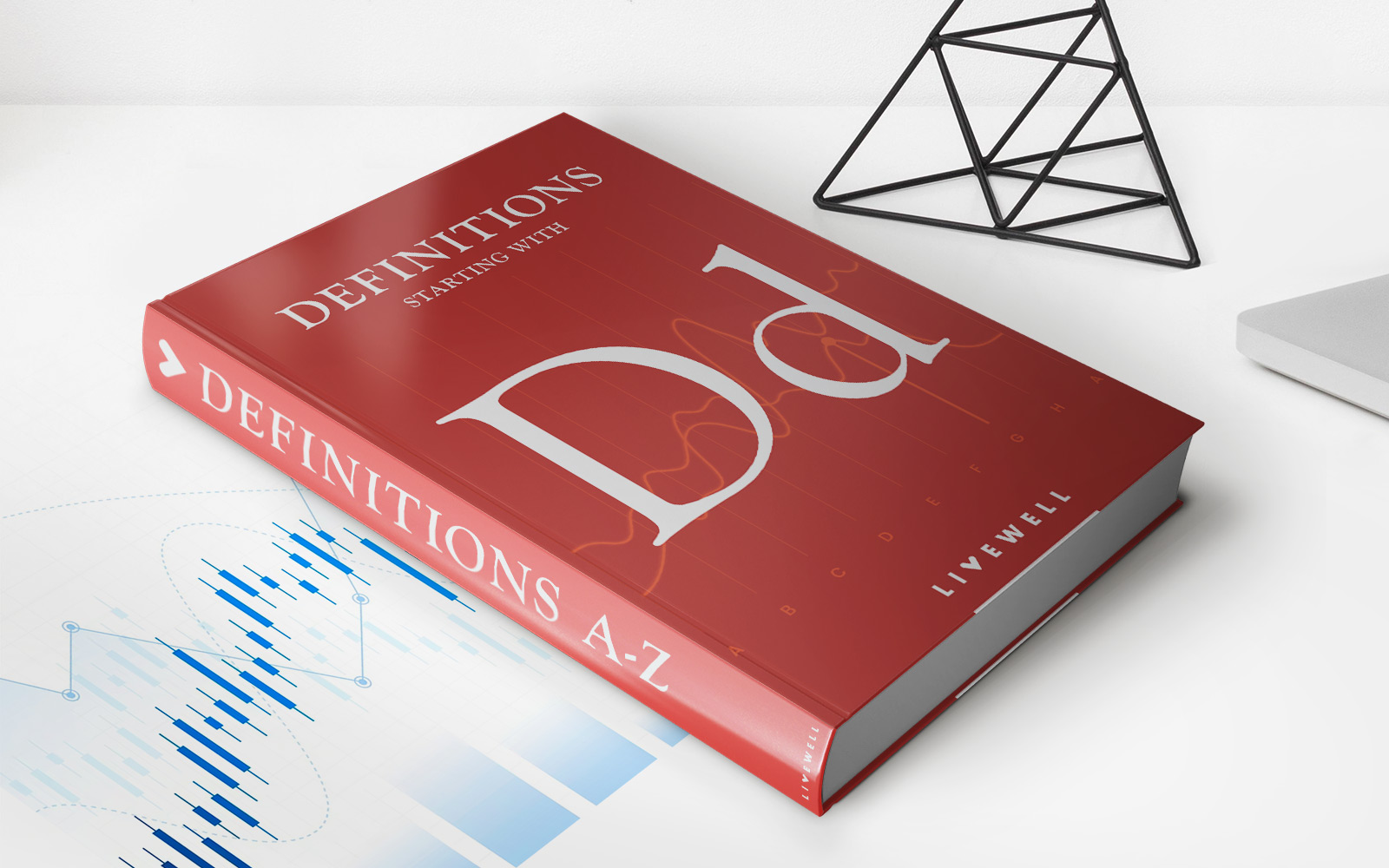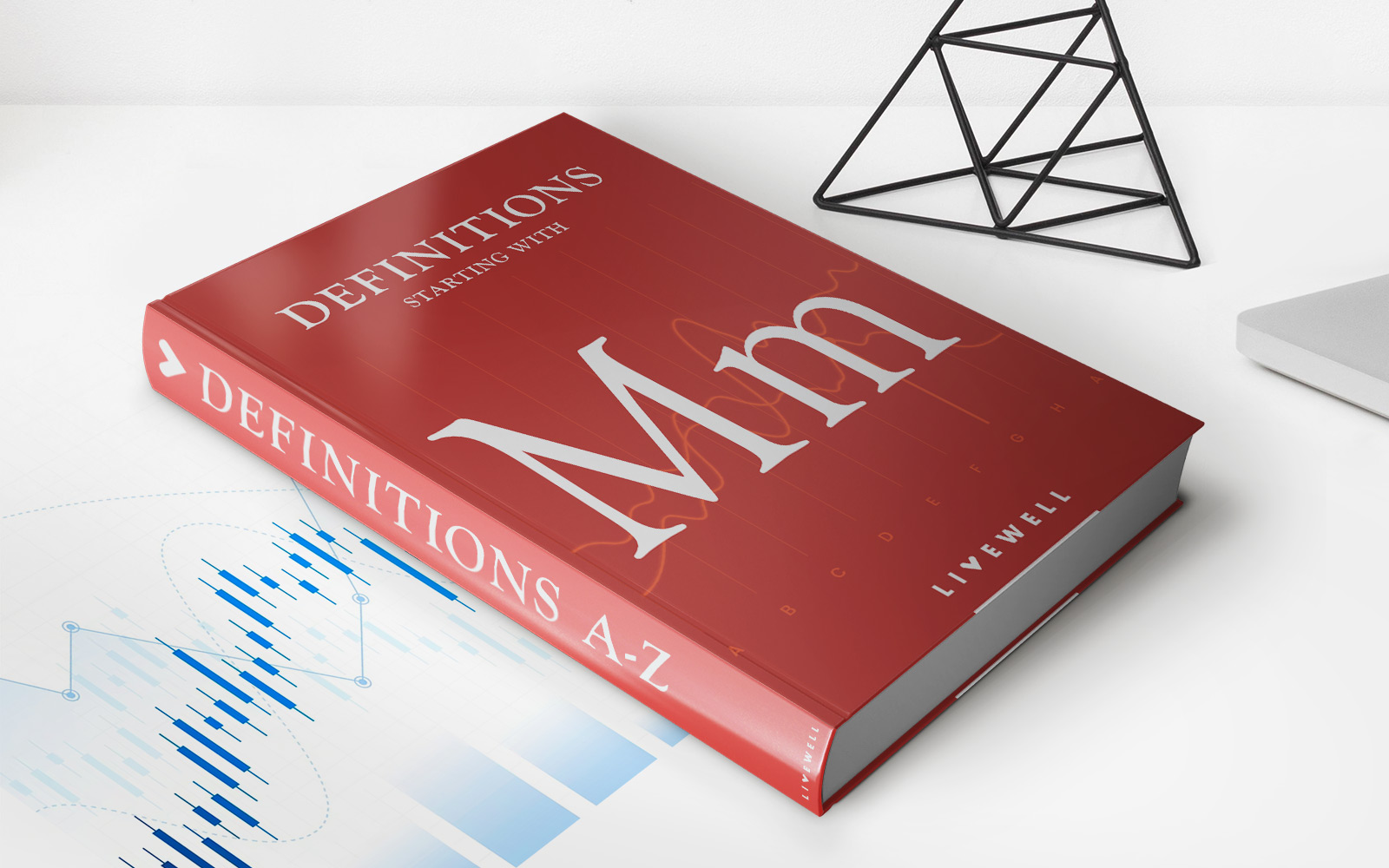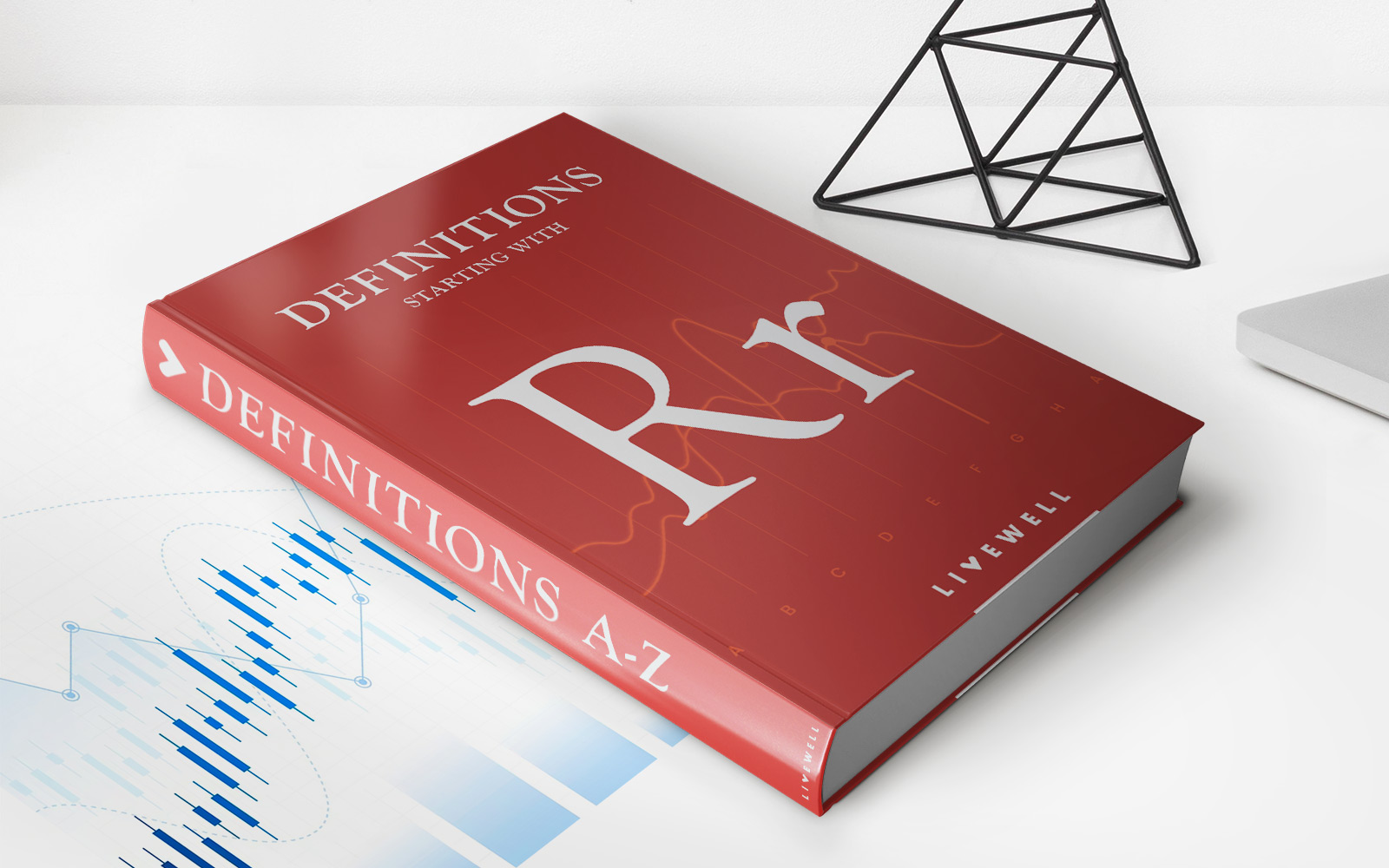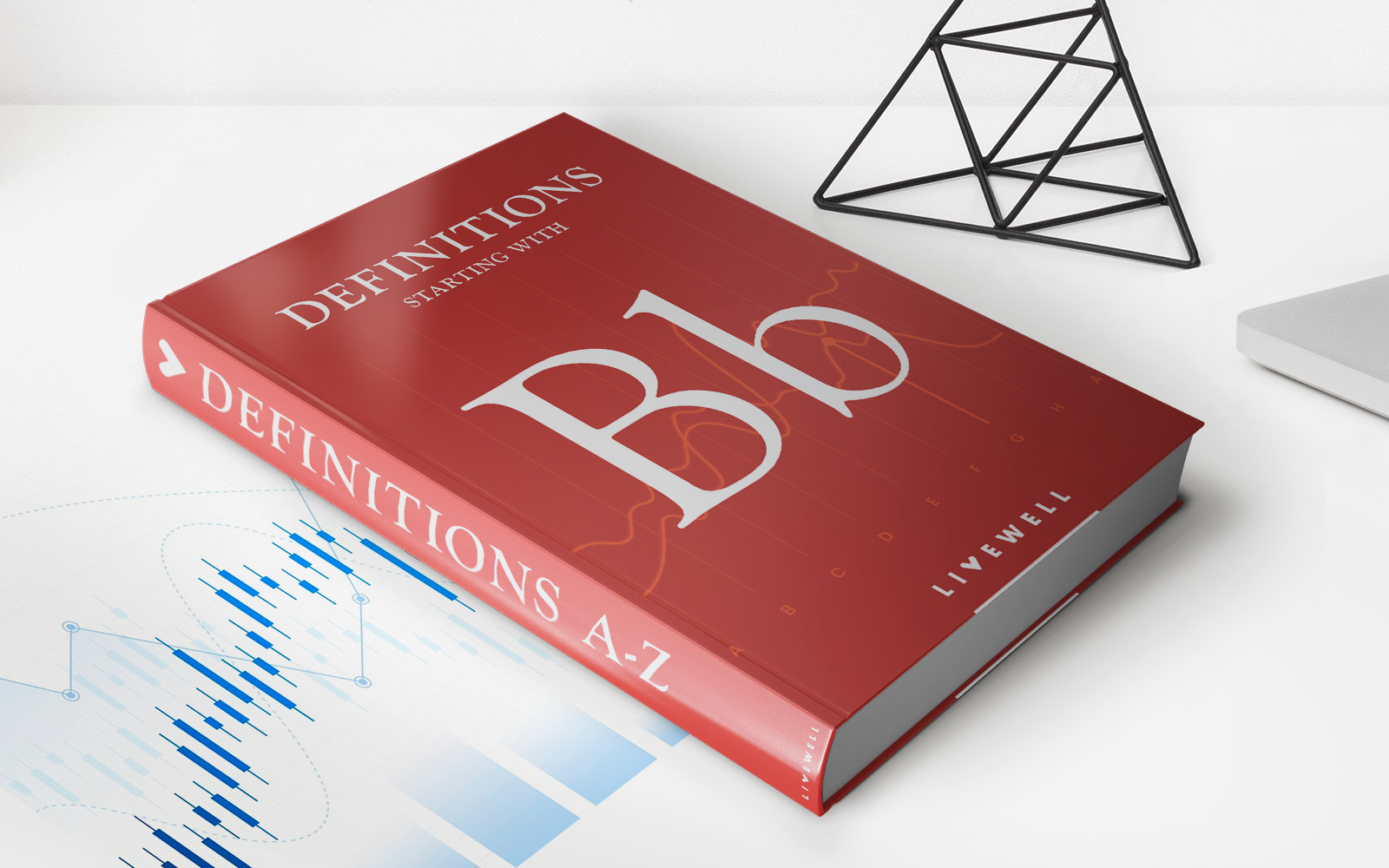

Finance
How Do I Get My 401K From Walmart
Modified: February 21, 2024
Looking to get your 401K from Walmart? Learn how to navigate the finance process and secure your retirement funds with our comprehensive guide.
(Many of the links in this article redirect to a specific reviewed product. Your purchase of these products through affiliate links helps to generate commission for LiveWell, at no extra cost. Learn more)
Table of Contents
Introduction
Welcome to the world of 401K plans! If you’re an employee of Walmart, you may be wondering how to navigate the ins and outs of their 401K program. Look no further – we’ve got you covered. In this comprehensive guide, we will walk you through everything you need to know about getting your 401K from Walmart.
A 401K plan is a retirement savings account that allows employees to contribute a portion of their earnings towards retirement. It offers various tax advantages, such as tax-deferred growth and potentially tax-free withdrawals in retirement. Walmart, being a leading employer, offers its employees a robust 401K program to help them save for the future.
Understanding how the Walmart 401K program works is essential if you want to maximize your retirement savings. From eligibility requirements to investment options and withdrawal rules, let’s dive deep into the world of Walmart 401K plans and explore the different aspects you need to consider.
Buckle up and get ready to embark on an exciting journey towards securing your financial future. By the time you finish reading this guide, you’ll have a clear understanding of how to navigate your Walmart 401K and make the most of the benefits it offers.
Understanding 401K Plans
Before we delve into the specifics of the Walmart 401K program, let’s start by understanding the basics of 401K plans in general. A 401K is a retirement savings plan that allows employees to contribute a portion of their pre-tax income to an investment account. The contributions are deducted directly from your paycheck, making it an easy and convenient way to save for retirement.
One of the key advantages of a 401K plan is the potential for employer matching. Many employers, including Walmart, offer a matching contribution to encourage employees to save for retirement. This means that for every dollar you contribute to your 401K, your employer will contribute a percentage of that amount as well. It’s essentially free money that can significantly boost your retirement savings.
Another benefit of 401K plans is the tax advantages they offer. The contributions you make to your 401K account are tax-deferred, meaning you won’t pay taxes on that money until you withdraw it in retirement. This allows your savings to potentially grow faster over time.
401K plans also provide flexibility when it comes to investment options. Typically, you’ll have a range of investment funds to choose from, including stocks, bonds, and mutual funds. This allows you to tailor your investment strategy based on your risk tolerance and long-term goals.
However, it’s important to note that 401K plans have certain limitations and rules. For instance, there are annual contribution limits set by the IRS, which may change each year. Additionally, there are penalties for early withdrawals before the age of 59 ½, unless certain conditions are met.
Now that you have a basic understanding of 401K plans, let’s explore the specifics of the Walmart 401K program and how you can make the most of it as an employee of Walmart.
Walmart 401K Program
The Walmart 401K program is designed to help employees of Walmart save for retirement. It offers a range of benefits and features that make it an attractive option for employees looking to secure their financial future.
One of the notable features of the Walmart 401K program is the generous employer matching contribution. Walmart matches a percentage of your contributions up to a certain limit. This means that for every dollar you contribute, Walmart will contribute a percentage of that amount, effectively boosting your retirement savings.
The Walmart 401K program also offers a diverse selection of investment options. As an employee, you’ll have the opportunity to choose from a variety of funds, including stock funds, bond funds, and target-date funds. This allows you to diversify your investments and tailor your portfolio to your individual risk tolerance and retirement goals.
Additionally, the Walmart 401K program provides online tools and resources to help employees manage and track their investments. Through the online portal, you can access account information, view performance, and make changes to your investment allocations. This gives you the flexibility to adapt your strategy as needed and stay on top of your retirement savings.
Another advantage of the Walmart 401K program is the ability to make catch-up contributions. If you are 50 years or older, you have the option to contribute additional funds to your 401K account. This allows you to accelerate your savings and make up for any lost time in preparing for retirement.
It’s important to note that Walmart offers both traditional 401K and Roth 401K options. With a traditional 401K, your contributions are made with pre-tax dollars, and you will pay taxes on your withdrawals in retirement. On the other hand, with a Roth 401K, your contributions are made with after-tax dollars, but your withdrawals in retirement are tax-free. This provides flexibility in choosing the most suitable option based on your personal circumstances.
Overall, the Walmart 401K program provides a solid foundation for employees to save for retirement. It offers attractive employer matching contributions, a wide selection of investment options, and user-friendly tools to manage your account. By taking advantage of these features, you can set yourself up for a more secure future.
Eligibility Requirements
To participate in the Walmart 401K program, you must meet certain eligibility requirements set by the company. These requirements ensure that employees have the opportunity to save for retirement and take advantage of the benefits offered by the program.
Generally, Walmart employees become eligible to enroll in the 401K program after completing a specific period of service. The length of this period may vary based on factors such as employment type and location. It’s essential to refer to Walmart’s policies or consult with your Human Resources department to determine your eligibility.
Full-time employees are typically eligible to enroll in the Walmart 401K program from their date of hire. Part-time employees, on the other hand, may have to wait for a certain period before becoming eligible, such as 1 year or 1,000 hours worked. Again, these requirements can vary, so it’s important to check the specific guidelines applicable to your employment status.
It’s worth noting that even if you are not initially eligible for the Walmart 401K program, you may still have access to other retirement savings options, such as an Individual Retirement Account (IRA) or the Walmart Associate Stock Purchase Plan (ASPP). These options can provide alternative avenues to save for retirement until you become eligible for the 401K program.
Once you meet the eligibility requirements, it’s essential to take advantage of this valuable benefit offered by Walmart. Participating in the 401K program allows you to start saving for retirement and capitalize on employer matching contributions, ultimately boosting your long-term financial security.
Remember to review and familiarize yourself with the specific eligibility requirements laid out by Walmart. Understanding these requirements will ensure that you can enroll in the 401K program at the appropriate time and start planning for your future.
Enrollment Process
Enrolling in the Walmart 401K program is a straightforward process that allows you to start saving for your retirement with ease. Here’s a step-by-step guide on how to enroll:
- Eligibility Check: Determine if you meet the eligibility requirements to participate in the Walmart 401K program. These requirements may include factors such as length of service and employment status.
- Access the Online Portal: Visit the WalmartOne website or the Walmart Benefits portal to access the online enrollment platform. You will need your login credentials to sign in.
- Navigate to the 401K Enrollment Section: Once logged in, locate the section related to 401K enrollment. This section will contain all the information and resources you need to enroll in the program.
- Review the Plan Documents: Take the time to read through the plan documents, including the summary plan description, investment options, and contribution limits. Understanding these details will help you make informed decisions about your retirement savings.
- Select Your Contribution Amount: Decide how much you want to contribute to your 401K account. You can choose a percentage of your pre-tax income or a fixed dollar amount. Keep in mind that there are annual contribution limits set by the IRS.
- Confirm Beneficiary Designations: Designate your beneficiary, who will receive your 401K savings in the event of your passing. Ensure that you provide accurate and up-to-date information to avoid any complications.
- Submit Your Enrollment: Once you have reviewed and completed all the necessary information, submit your enrollment. You may receive a confirmation message or email indicating that your enrollment has been successfully processed.
It’s important to note that you can make changes to your enrollment at any time. If you want to adjust your contribution amount or investment allocations, simply access the online portal and make the necessary updates.
Keep in mind that enrolling in the Walmart 401K program is a significant step towards securing your financial future. By taking advantage of this benefit, you are setting yourself up for a more comfortable and stress-free retirement.
If you have any questions or need assistance during the enrollment process, reach out to your Human Resources department or the Walmart Benefits Center for guidance. They will be able to provide you with the necessary support to ensure a smooth enrollment experience.
Contributions and Matching
When it comes to the Walmart 401K program, understanding how contributions and matching works is crucial to making the most of this retirement savings opportunity. Let’s explore the key aspects of contributions and matching in the Walmart 401K program:
Employee Contributions: As an employee, you have the option to contribute a portion of your pre-tax income to your 401K account. The specific contribution amount is entirely up to you and can be adjusted as needed. You can contribute a percentage of your income or a fixed dollar amount, within the annual contribution limits set by the IRS.
Employer Matching: One of the major advantages of the Walmart 401K program is the generous matching contribution provided by the company. Walmart will match a percentage of your contributions, up to a certain limit. The matching formula may vary based on factors such as your length of service and employment classification. It’s crucial to review the specific details of the matching contribution provided by Walmart to maximize this additional benefit.
Vesting: Vesting refers to the ownership of employer matching contributions made to your 401K account. In other words, it determines how much of the employer’s contributions you are entitled to if you were to leave the company. Walmart has a vesting schedule, which means that your ownership of the matching contributions increases gradually over time. It’s essential to understand the vesting schedule to determine what portion of the company’s contributions you may keep if you change jobs or retire.
Catch-Up Contributions: If you are 50 years of age or older, you have the opportunity to make catch-up contributions to your 401K account. Catch-up contributions allow you to save additional funds for retirement beyond the regular contribution limits. This is especially beneficial if you feel that you need to accelerate your savings to reach your retirement goals.
Remember, the more you contribute to your 401K account, the more you can potentially accumulate for retirement. By taking advantage of employer matching contributions and utilizing catch-up contributions if eligible, you can expedite your retirement savings journey.
Keep in mind that the contribution and matching details may vary based on your specific Walmart employment status, so it’s essential to review the information provided by the company and consult with your Human Resources department if you have any questions or need clarification.
By understanding the ins and outs of contributions and matching in the Walmart 401K program, you can make informed decisions about your savings strategy and maximize your retirement nest egg.
Investment Options
When it comes to the Walmart 401K program, it’s important to understand the available investment options. The investment options determine how your contributions are allocated and play a significant role in the growth of your retirement savings. Here are the key aspects to consider:
Fund Selection: Walmart offers a range of investment funds within their 401K program, allowing you to diversify your portfolio. These funds typically include a mix of stocks, bonds, and mutual funds. You have the opportunity to choose the funds that align with your risk tolerance, investment objectives, and retirement goals.
Stock Funds: Stock funds, also known as equity funds, invest primarily in stocks of various companies. These funds can provide the potential for higher returns over the long term, but they also come with a higher level of risk. If you have a higher risk tolerance and a longer time horizon, allocating a portion of your contributions to stock funds may be suitable for you.
Bond Funds: Bond funds, on the other hand, invest in fixed-income securities such as government or corporate bonds. They offer a more conservative investment option with potentially lower returns. Bond funds are typically recommended for individuals with a lower risk tolerance or those looking for more stable income-generating investments.
Target-Date Funds: Target-date funds are balanced investment options that automatically adjust the allocation of assets based on your expected retirement date. These funds gradually become more conservative as you approach your target retirement date. Target-date funds provide a convenient hands-off approach for individuals who prefer a pre-designed investment strategy without having to actively manage their portfolio.
Asset Allocation: Asset allocation refers to the distribution of your contributions among different investment funds. It’s crucial to create a well-diversified portfolio to manage risk effectively and potentially optimize returns. The ideal asset allocation will depend on factors such as your risk tolerance, time horizon, and investment goals.
When choosing your investment options within the Walmart 401K program, consider your personal financial situation and investment objectives. It may also be beneficial to consult with a financial advisor or utilize the tools and resources provided by Walmart to make informed decisions.
Remember, investing involves risk, and past performance is not indicative of future results. Regularly monitor your investment allocations, review your portfolio, and make adjustments as necessary to stay on track towards your retirement goals.
By understanding the investment options offered by Walmart’s 401K program and tailoring your portfolio to your individual needs, you can potentially maximize your long-term savings and work towards a financially secure retirement.
Managing Your 401K
Effectively managing your Walmart 401K is crucial for building a strong foundation for your retirement. While the investment options and contributions are essential, there are other factors to consider to ensure your 401K works for you. Here are some key aspects to keep in mind:
Regularly Monitor Your Account: It’s important to stay engaged with your 401K account and regularly review your investment performance. Track the growth of your savings and assess if any adjustments or rebalancing are necessary to align with your investment strategy and achieve your retirement goals.
Stay Informed: Keep yourself updated on any changes or updates to the Walmart 401K program. This includes being aware of any modifications to contribution limits, matching percentages, and investment options. Stay connected with the resources provided by Walmart, such as newsletters, online tools, and educational materials.
Utilize Online Tools and Resources: The Walmart 401K program provides online tools and resources to help you manage and track your retirement savings. Take advantage of these resources to access account information, review investment options, and make changes to your allocations. These tools can empower you to make informed decisions and take control of your financial future.
Reevaluate Your Investment Strategy: As you progress through different stages of your life and your financial goals evolve, it’s essential to reevaluate your investment strategy. Consider factors such as your risk tolerance, time horizon, and changing market conditions. Adjust your asset allocation and investment choices accordingly to ensure your portfolio aligns with your changing needs.
Seek Professional Advice: If you feel overwhelmed or unsure about managing your 401K, consider seeking professional advice. A financial advisor can provide personalized guidance based on your individual circumstances, help you optimize your investment choices, and create a comprehensive retirement plan.
Beneficiary Designation: Review and update your beneficiary designation regularly to ensure that your 401K savings go to the intended recipient in case of your passing. This is an important aspect of estate planning and ensures proper distribution of your assets according to your wishes.
Remember, your 401K is a long-term investment, and it’s essential to stay committed and disciplined. By actively managing your Walmart 401K and staying informed, you can make the necessary adjustments to keep moving towards a successful retirement.
Lastly, continue educating yourself about retirement planning and financial literacy. The more knowledgeable you are, the better equipped you’ll be to make informed decisions about your 401K and your overall financial well-being.
Vesting and Withdrawal Rules
Understanding the vesting and withdrawal rules of your Walmart 401K plan is crucial when it comes to accessing your funds and making decisions about your retirement savings. Let’s take a closer look at these important aspects:
Vesting: Vesting refers to the ownership of the contributions made by Walmart to your 401K account. In other words, it determines how much of the employer’s contributions you are entitled to if you were to leave the company. Walmart has a vesting schedule that specifies how long you must be employed to have full ownership of the employer matching contributions. It’s important to review this schedule to understand what portion of the company’s contributions you may keep if you change jobs or retire.
Withdrawal Rules: Generally, you cannot withdraw funds from your 401K account before the age of 59 ½ without incurring penalties. However, there are certain exceptions that allow for penalty-free withdrawals, such as financial hardship or disability. Be aware that even if you meet the criteria for a penalty-free withdrawal, your withdrawal may still be subject to income tax. It’s crucial to consult with a tax professional or financial advisor to understand the implications of any withdrawals you may need to make.
Minimum Required Distributions (MRDs): Once you reach the age of 72, you are generally required to start taking minimum distributions from your 401K account. The amount you must withdraw is based on your account balance and life expectancy. Failing to meet MRD requirements can result in significant penalties. It’s important to review and understand the MRD rules to ensure compliance and properly manage your retirement income.
Rollovers: If you leave Walmart, you have the option to roll over your 401K funds into another qualified retirement account, such as an Individual Retirement Account (IRA). Rolling over your funds allows you to maintain the tax advantages and continue growing your retirement savings. Be sure to follow the rollover guidelines and consult with a financial advisor to ensure a smooth transition.
Loan Provisions: Some 401K plans, including Walmart’s, offer loan provisions that allow you to borrow a portion of your vested 401K funds. Keep in mind that borrowing from your 401K should be approached with caution, as it can potentially disrupt your long-term savings and come with certain risks. Understanding the terms and conditions of any available loan options is essential before making such a decision.
It’s important to thoroughly review the vesting and withdrawal rules of your Walmart 401K plan and consult with a financial advisor or tax professional to ensure compliance and make informed decisions regarding your retirement savings. By understanding these rules, you can effectively plan for your future and make the most of your 401K benefits.
Cashing Out Your Walmart 401K
When it comes to leaving Walmart or reaching retirement age, you may have the option to cash out your Walmart 401K. Cashing out allows you to receive a lump sum payment of your 401K funds. Here are some important aspects to consider:
Employment Status: Before cashing out your Walmart 401K, it’s crucial to consider your employment status. If you are still employed by Walmart and are under the age of 59 ½, cashing out your 401K may result in penalties and taxes. It’s important to carefully review the withdrawal rules and consult with a financial advisor or tax professional to ensure you make informed decisions.
Penalties and Taxes: Cashing out your 401K before reaching the age of 59 ½ typically incurs a 10% early withdrawal penalty, in addition to income taxes on the distribution. This means that a significant portion of your funds may be subject to taxes and penalties, reducing the amount you ultimately receive. Consider these implications before deciding to cash out your 401K.
Rollover Options: Instead of cashing out your 401K, you may have the option to roll over your funds into another qualified retirement account, such as an Individual Retirement Account (IRA) or a new employer’s retirement plan. Rolling over your funds allows you to maintain the tax advantages and continue the growth of your retirement savings. It’s important to consult with a financial advisor to understand the rollover process and make the best decision based on your individual circumstances.
Consider Long-Term Impact: Cashing out your Walmart 401K may seem appealing to access a significant sum of money. However, it’s important to consider the long-term impact on your retirement savings. Cashing out can significantly diminish your nest egg, making it more challenging to reach your desired retirement goals. Take the time to assess your financial needs, explore other options, and carefully weigh the pros and cons before making a decision.
Seek Professional Advice: Cashing out your 401K is a complex decision that can have long-lasting implications for your financial future. It’s crucial to consult with a financial advisor or tax professional who can provide personalized advice based on your unique circumstances. They can help you understand the potential consequences of cashing out and explore alternative strategies to achieve your financial goals.
Remember, the purpose of a 401K is to provide a secure and tax-advantaged source of income in retirement. Cashing out your Walmart 401K should only be considered after carefully weighing all the factors involved and understanding the potential financial impact. By making informed decisions, you can protect and grow your retirement savings in the most effective way possible.
Rolling Over Your 401K
When you leave Walmart or want to explore different retirement savings options, rolling over your Walmart 401K can be a smart move. Rolling over allows you to transfer your 401K funds into another qualified retirement account without incurring taxes or penalties. Here’s what you need to know about rolling over your Walmart 401K:
Choose a Rollover Option: There are two primary rollover options available: a direct rollover and an indirect rollover. With a direct rollover, your 401K funds are transferred directly to the new retirement account without passing through your hands, ensuring a tax-free and penalty-free transfer. In contrast, an indirect rollover involves receiving a distribution check, which you have 60 days to deposit into a new retirement account. While this gives you more flexibility, be aware that taxes could be withheld from the distribution check, and you may be subject to penalties if the funds are not deposited within the 60-day window.
Consider an IRA: One popular option for rolling over your Walmart 401K is to transfer the funds into an Individual Retirement Account (IRA). IRAs often offer a wider range of investment options compared to employer-sponsored 401K plans, allowing for greater flexibility and potential growth. Additionally, an IRA rollover allows you to consolidate multiple retirement accounts into one, simplifying your financial management.
Evaluate New Employer’s Retirement Plan: If you’re switching jobs and your new employer offers a retirement plan, such as a 401K or 403b, you may consider rolling over your Walmart 401K into the new plan. This can be beneficial if the new plan offers favorable investment options or employer matching contributions. Make sure to review the details of the new employer’s plan before making a decision.
Consult with a Financial Advisor: Rolling over your 401K involves several important considerations. Consulting with a financial advisor who specializes in retirement planning can provide valuable guidance. They can help you understand the potential tax implications, evaluate different rollover options, and choose the best path based on your financial goals and circumstances.
Initiate the Rollover: To initiate a rollover, you’ll need to contact the financial institution where you want to move your funds and follow their specific instructions. They can guide you through the necessary paperwork and ensure a seamless transfer of your Walmart 401K assets.
Remember, a rollover allows you to preserve and continue growing your retirement savings while maintaining the tax advantages you’ve accumulated. By carefully evaluating your options and seeking professional advice, you can make an informed decision and optimize your retirement strategy.
Frequently Asked Questions
Here are some common questions about the Walmart 401K program:
- When can I enroll in the Walmart 401K program?
- How much can I contribute to my Walmart 401K?
- How does the employer matching contribution work?
- What investment options are available in the Walmart 401K program?
- Can I take a loan from my Walmart 401K?
- What happens to my Walmart 401K if I leave the company?
The eligibility requirements for enrolling in the Walmart 401K program vary based on factors such as employment type and location. Generally, full-time employees can enroll from their date of hire, while part-time employees may have to wait for a specific period, such as 1 year or 1,000 hours worked. Check with Walmart’s policies or consult your Human Resources department for the exact details.
The IRS sets annual contribution limits for 401K plans. As of 2021, the limit is $19,500 for employees under the age of 50. If you are 50 or older, you can make additional catch-up contributions of up to $6,500. However, these limits may change, so it’s important to stay updated on the current limits.
Walmart offers an employer matching contribution to encourage employees to save for retirement. The company matches a percentage of your contributions, up to a certain limit. The matching formula may vary based on factors such as your length of service and employment classification. Review Walmart’s matching contribution details to understand how to maximize this additional benefit.
The Walmart 401K program offers a diverse selection of investment options. You can choose from various stock funds, bond funds, target-date funds, and more. These options allow you to create a well-diversified portfolio based on your risk tolerance and retirement goals.
Yes, the Walmart 401K program may offer loan provisions that allow you to borrow a portion of your vested funds. However, it’s important to approach borrowing from your 401K with caution, as it can potentially disrupt your long-term savings and come with risks. Review Walmart’s loan provisions and consult with a financial advisor to understand the terms and implications before making a decision.
If you leave Walmart, you have several options for your Walmart 401K. You can choose to leave it with Walmart, roll it over into an Individual Retirement Account (IRA), transfer it to your new employer’s retirement plan (if eligible), or cash it out. Each option has its benefits and considerations, so it’s important to evaluate the best choice based on your individual circumstances and future financial goals.
These are just a few frequently asked questions about the Walmart 401K program. If you have more specific queries, it’s recommended to consult Walmart’s resources, speak with your Human Resources department, or seek professional advice to ensure you have accurate and up-to-date information relevant to your situation.
Conclusion
Navigating the Walmart 401K program is essential for securing your financial future and planning for a comfortable retirement. By understanding the ins and outs of the program, you can make informed decisions about contributions, investments, and withdrawals. Here’s a recap of the key points we covered:
We began by highlighting the importance of understanding 401K plans in general, their tax advantages, and the potential for employer matching contributions. We then explored the specific features of the Walmart 401K program, including the generous matching contribution, diverse investment options, and user-friendly tools to manage your account.
We discussed eligibility requirements and the enrollment process, emphasizing the need to enroll at the appropriate time to take advantage of this valuable benefit. Contributions and matching were explained, underscoring the significance of maximizing employer matching contributions and considering catch-up contributions if you are 50 years or older.
We then delved into the available investment options within the Walmart 401K program, emphasizing the importance of diversification and aligning your investments with your risk tolerance and retirement goals. Managing your 401K and staying informed about plan changes and performance were highlighted as essential aspects of maintaining and growing your retirement savings.
We also covered important topics such as vesting and withdrawal rules, cautioning against cashing out your 401K before retirement and encouraging consideration of rollover options to preserve tax advantages and continue the growth of your savings. We addressed frequently asked questions to provide clarification on common concerns related to the Walmart 401K program.
In conclusion, participating in the Walmart 401K program is a valuable opportunity to save for retirement and secure your financial future. By understanding the program’s details, taking advantage of employer contributions, and making informed decisions about investments and withdrawals, you can build a strong foundation for a comfortable retirement. Remember to consult with financial professionals and leverage the resources provided by Walmart to make the most of your 401K benefits.
